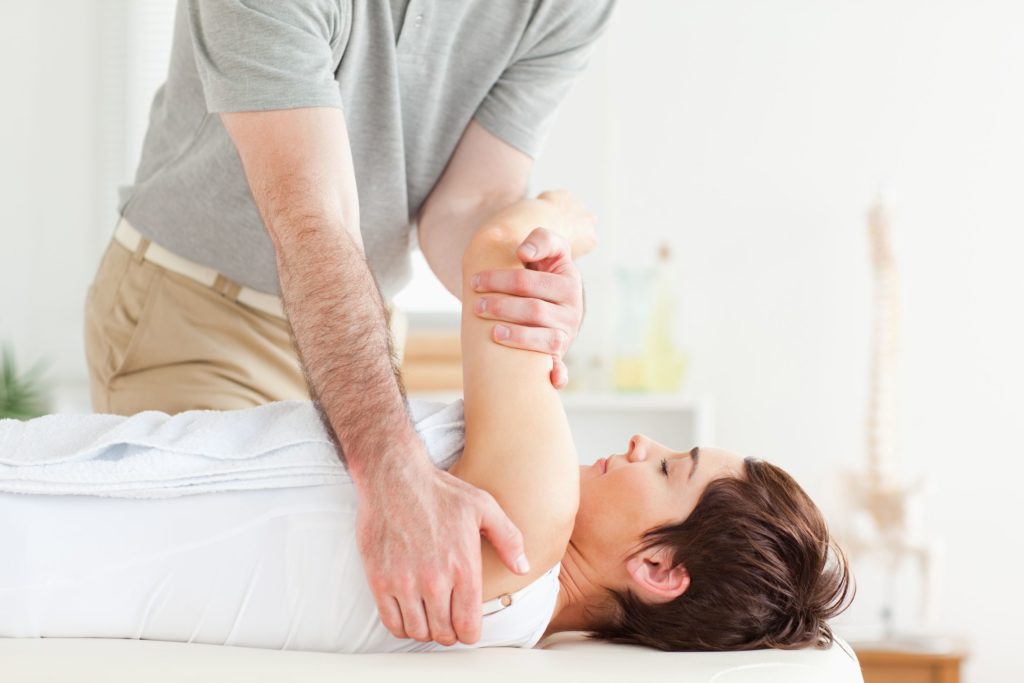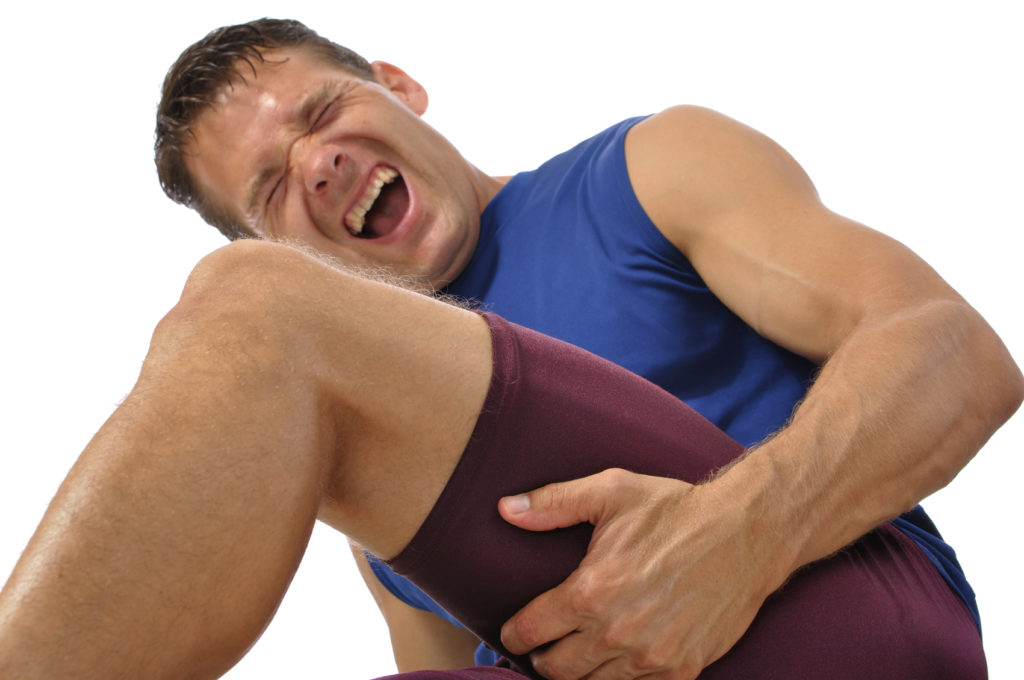Muscle strain Treatment: We have gathered here different types of muscle injuries. The cramp complete rupture of a muscle – which can occur in a sporting activity, whether one is a beginner athlete, confirmed competitor, or practicing high level. These injuries mainly happen on the lower limb (muscles of the thigh and calf), may compromise the sport of recreational or competitive goals of an athlete.
Supporting muscle injuries have three important goals
- A quick recovery and return to the normal sporting activity
- No transition to the chronic injury
- Reduced risk of recurrence during the resumption of sporting activity
Each year, approximately 9% of all people from 6 years to 74 years doing sports or leisure suffer an injury requiring the consultation of professional health. (This statistic includes all types of accidental injuries, including fractures).

Muscle strain Treatment: The muscle
The main characteristic of a muscle is its ability to contract in producing movement.
Muscle injury (sports): The classic representation shows a muscle bulging in the middle, which continues to the ends by two tendons. It consists of several fibers, fines, long (some are muscle length), arranged in parallel, in bundles, and separated by connective tissue. This fibrous reinforcement enables the shortening of the muscle, synonymous with movement. But contrary to popular belief, the muscles are not only dedicated to the movement or gesture activity. Indeed, many muscles used at rest; This is called muscle tone to such standing.

Types of muscle injuries
There are several types of muscle injuries, depending on the circumstances and context of the accident and the data interrogation and clinical examination.
Cramp
This is not really a muscle injury but rather a temporary malfunction. Cramp, in fact, corresponds to an extremely painful contraction, involuntary and fleeting, like a crushing affecting one or more muscles. It may occur at rest, during sleep or exercise. The origin of cramps occurring in a sporting context is complex. They are the result of an oxygen deficiency or blood electrolytes or a buildup of toxins related to the effort. They may be secondary to muscle depletion or dehydration.
Contusion
This is the result of direct trauma to the muscle contraction phase most often or at rest. It is manifested by pain on impact, by swelling and sometimes bruising (hematoma or effusion of blood under the skin subsequent to rupture of blood vessels, known colloquially blue). These events are all the more important and deeper than the initial trauma is intense.
Elongation
The first stage of muscle injury. It corresponds to excessive elongation of the muscle. The elongation occurs during excessive strain or muscle as a result of excessive contraction. Some muscular fibers are stretched rupture. it is therefore very limited tearing or “microscopic”.
The elongation is manifested by a stress-causing pain or lameness, or hematoma. The wounded felt a sharp pain, like a sting, when starting such or on a poorly heated or tired muscle. The effort is still possible though somewhat painful. The muscles of the quadriceps (front thigh muscle) and the back of the thigh (hamstrings) are most likely to undergo elongation. The practice of sport is still possible but painful.
Breakdown
The breakdown also corresponds to an elongation mechanism in which many fibers are broken and bleeding. The pain is intense, like a stab in the muscle. A slam sensation is sometimes felt, hence the term breakdown. There is also talk of tearing stage 2. In stage breakdown, the sport is no longer possible. Walking is also made difficult.
Tear
The muscle tear is like a muscle fracture, like a bone fracture. The pain is such that it sometimes causes discomfort and fall. Tears mainly concern the hamstrings, adductors, and calves ( “tennis leg”). Pressing the member is very difficult and the pursuit of sporting activities became impossible. Bleeding and hematoma are important, not slow to appear.
In reality, all intermediaries are possible between single elongation, small breakdown and tear and the exact classification of muscle injury can be difficult to assess by clinical examination alone. Hence the value of ultrasound and MRI (magnetic resonance imaging) which are choice examinations when it comes to making an accurate diagnosis or the extent of the injury, including diagnosis of a tear.

The Causes of Muscle Damage
- Beginning of the year: overtraining or insufficient training, inadequate heating or of poor quality, bad sporting gesture, etc.
- At year-end: fatigue, lack of flexibility of the muscle.
- During the year: a sporting gesture of poor quality, sudden, violent movements, uncoordinated, particularly if there is an imbalance between the strength of agonist’s muscles (which are the movement) and the antagonistic muscles (which are the opposite movement ) – for example, the biceps and triceps, quadriceps and hamstrings.
- In a direct blow with a hard object (spike knee of another athlete, pole, etc.).
- Due to a too intense or prolonged effort.
- Because of a badly healed anterior muscle injury.
- Handling overweight.
- When using unsuitable training equipment (including shoes).
- Due to too hard drive surface (asphalt, concrete …).
- In the absence of adequate hydration before, during, or after exercise.
- When power is inadequate.
- In the absence of stretching after exercise and more generally, insufficient muscle stretch compared to muscle stress.
- During exertion in cold conditions.

Symptoms of muscle injuries and those at risk
Muscle cramp
- Stiffening of muscle accompanied by intense pain;
- Loss of mobility-related muscle joints.
Contusion
Pain at the impact point and a dark spot in the skin, according to the evolution of injury: brown, red, blue, green, or yellow.
Elongation or breakdown
Lameness, acute pain, acute and brutal at a muscle. The pain is manifested in the muscle contraction to stretching and palpation. This injury requires stopping the effort but allows movement. More severe the injury, the more intense the pain and functional impairment are important.
Tear
- An appearance of a rapid swelling. If the muscle injury is just under the skin, we sometimes see a small bruise (quadriceps particular).
- The pain is often compared to a dagger. The bruise is sometimes large. At this point, the member is no longer functional.
People at risk
All people who play sports: amateur or professional athletes, simple recreational sports enthusiasts.

Preventing muscle injuries
Drinking adequate water before or during sport but in small quantities will help prevent muscle injuries.
Advice:
- Stick well to the manufacturer’s recommendations. Beware of beverages containing too much sugar and requiring sufficient dilution in water. These beverages should be limited to vigorous activities for more than an hour
- Stay alert to the first signs of fatigue. We must learn to stop before the onset of cramps or muscle injury.
- Pace yourself and avoid too intense or prolonged efforts during the first sessions. Gradually progress in a sport. Muscle fatigue that occurs when the muscle is not used to provide the required strength can cause cramps.
Prevention bruises
- Wear suitable prevention equipment: helmet, shin guards, knee, ankle, etc.
- Adopt a healthy lifestyle: balanced diet, maintaining a healthy weight (obesity can cause stress or strain on the muscles), sufficient sleep quality, and quantity.
- Take advice from a competent coach, either to introduce you to a new sport.
- Avoid abruptly increase the intensity of physical effort, whether in your work or your sport. Gradually increasing efforts, we leave the body time to adjust and it strengthens tendons while relaxing the muscles;
- Respect rest time to recover sufficiently after practices and competitions. Listen to your body and avoid exercising if you feel tired yet by previous efforts.
- Adapt your sport in your fitness and your age.
- Expect good equipment. Do not hesitate to consult a sports podiatrist in case of pain in the feet soles fit your morphology can correct many morphological abnormalities and the possible support of defects.
- After physical activity: make a stretching session, i.e gradual and controlled stretching, performing alternately tension maintained for about twenty seconds and relaxation and taking care to slowly stretch all the muscles used during the physical activity. Stretching exercises are very interesting in terms of injury prevention provided perform moderately.

Medical treatment of muscle injuries
Important. We must respect the physiotherapy treatment and the number of sessions prescribed to reduce the risk of recurrence and fibrosis, easily reversible complication that can occur after a bruise, a strain, or a tear. It is characterized by the formation of a scar inside the muscle that will stiffen, making painful muscle contractions.
Treatment of cramps
To stop a cramp, you must first stretch the muscle contraction fighting against. For example, in the case of cramp in the calf, it must flex the foot and toes upward and fight against muscle contraction, holding the leg. Once the cramp stops, a light massage on the calf helps relieve residual pain. One can also apply ice on the muscle to reduce muscle contraction speed and prevent the inflammatory response.
Treatment of strain, tear, and bruise
Considering the average time to healing of the muscle fiber of about 12 days, the athlete rest is essential regardless of the type of muscle injury. A sports decision which will be even longer than the muscle injury is important.
Simple Elongation
The immediate application of ice and resting for 10 days is sufficient.
Simple breakdown
As elongation, immediate ice application is recommended in the case of a breakdown. On average, count 3 weeks of sports strict stop.
Tear
This is the most serious muscle injury. All intermediaries are possible between a lesion of a few centimeters long to total rupture of the muscle. Treatment depends on the severity of the lesion and the ultrasound data that will allow us to accurately assess the size of the hematoma (an ultrasound emergency has little value because the hematoma is not yet fully formed).
Treatment involves immediate icing, compression bandages, heightening member, analgesics. Stopping the sport can take between 2 and 6 full months depending on the extent of the injury. The resumption of sport must be cautious. Sequelae may form, such as calcification of the hematoma, including the quadriceps (operable if the discomfort is significant), or scar muscle. These effects occur most frequently when the recovery was premature or inappropriate massages were performed in the acute period.

